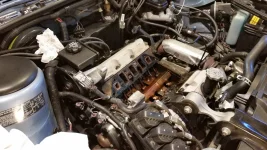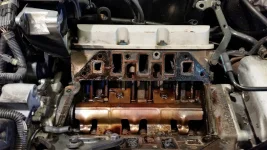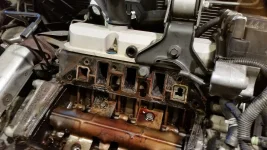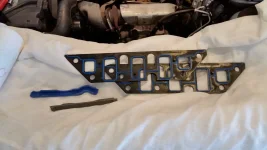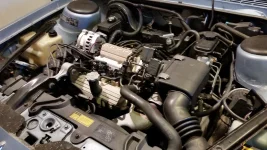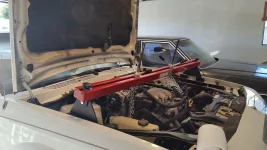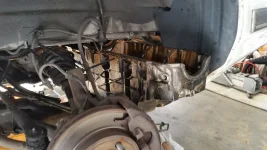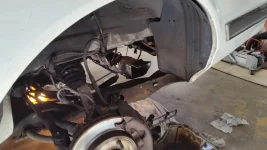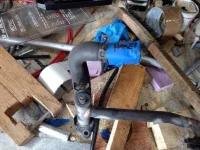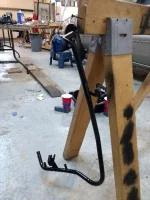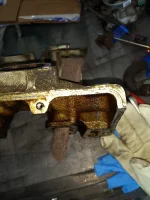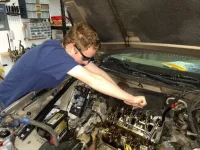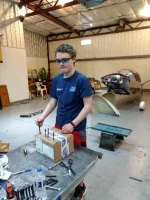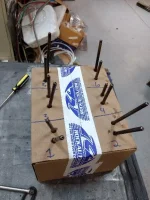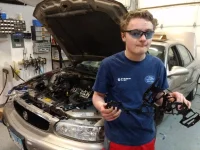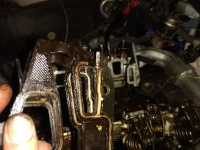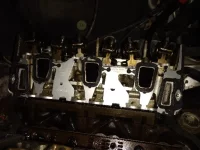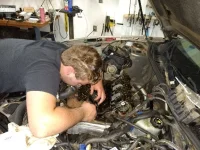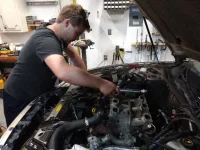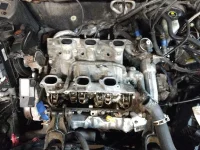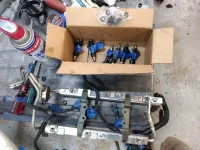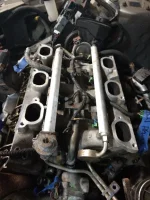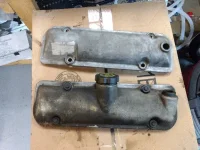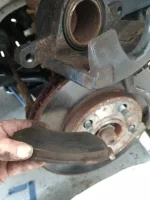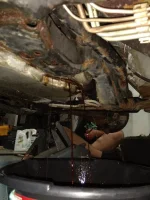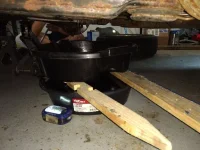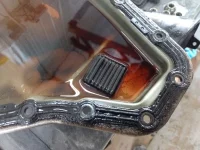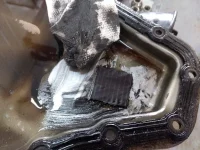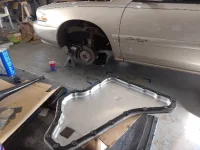We had our Buick rollout this evening.
Don't worry about the coolant on the floor, that was a spill. I cleaned the floor after they backed up so we could look for other leaks. We broke the coolant bleeder on the passenger side. I just screwed out the whole plug before it got too hot. The coolant low light used to be stuck on. I swapped in a junkyard sensor and it seems to work. During our first short cruise the low coolant light was on and off. We found the reservoir had gotten low as the air worked its way out. Still topped off at the radiator. After we topped the reservoir no more light. We also had one check engine light and a code:
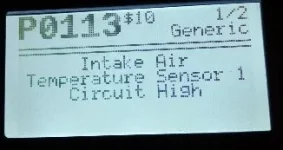
We cleared it and it has not returned. We have had the car to 60. It accelerates well at full throttle. The transmission seemed slippy on one of those tests but we have not changed the fluid and filter yet. We are going to pull and inspect the calipers tomorrow and bleed the brakes one more time.
My total investment right now is about $900. The car was $200, the uhaul trailer was $62, and the rest was parts and fluids. From memory here is my list:
New and installed: oil, oil filter, plugs, wires, air filter, serpentine belt, fuel filter, rubber brake hoses, nicopp 3/16" brake line, nicopp 3/8" fuel line, wheel cylinders, banjo bolts, resistor keys x 2 (they both work!), Brake fluid, antifreeze.
From the junkyard: fuel line section, master cylinder to ABS controller lines.
Bought but not done yet: key fobs (need to be programmed), trans fluid, pan gasket, and filter, refrigerant with UV dye.
Fabricated: fuel filter bracket, main fuel line, all hard brake lines, longer bolt for a stripped battery terminal.
Now to start driving it....


